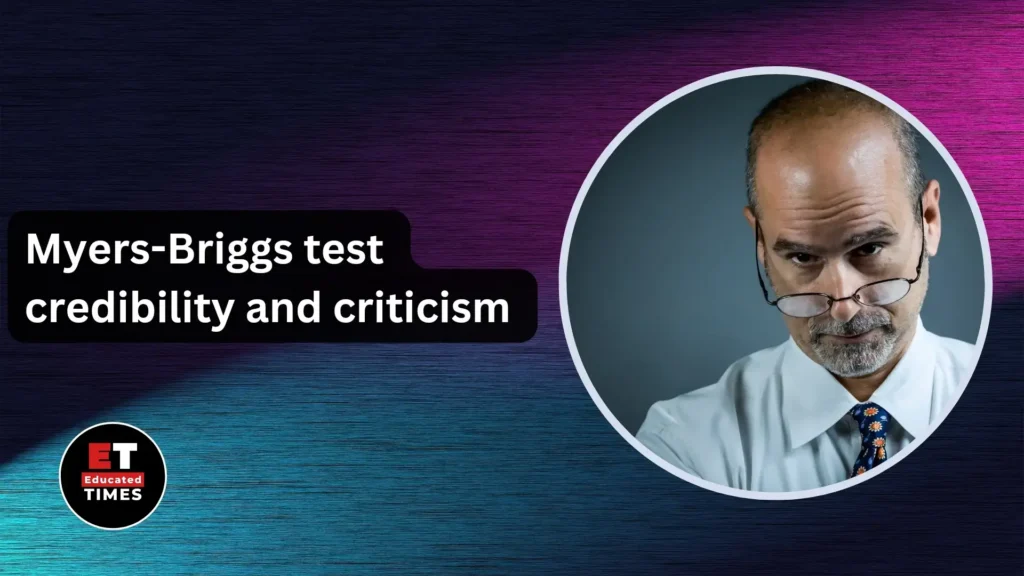Introduction
Did you know that many modern education strategies stem from one man’s groundbreaking work in the 1950s? Meet Benjamin Bloom, the visionary whose theories continue to shape classrooms and learning experiences worldwide. Whether you’re an educator, a parent, or a student, understanding Bloom’s contributions could transform the way you think about learning.
Table of Contents
Who Was Benjamin Bloom?
Benjamin Bloom was an American educational psychologist who profoundly influenced the field of education. Born in 1913, Bloom dedicated his life to understanding how people learn and how educators can optimize teaching strategies. He is best known for developing Bloom’s Taxonomy, a hierarchical framework for categorizing educational goals. Beyond this, his contributions include pioneering work in formative assessment and mastery learning, solidifying his reputation as a key figure in educational theory.
Benjamin Bloom was married to Sophie Bloom from 1940 until his death in 1999. Sophie was a supportive partner throughout his career, and together they raised two sons, David and Jonathan. Sophie’s role in Bloom’s life was significant, providing stability and encouragement as he pursued his groundbreaking work in educational psychology.
Where Did Benjamin Bloom Study?
- Pennsylvania State University (Penn State)
- Bloom earned his bachelor’s degree from Penn State in 1935.
- During his time there, he developed an interest in education and psychology, which shaped his future career.
- University of Chicago
- Bloom pursued his master’s degree and Ph.D. at the University of Chicago.
- He completed his Ph.D. in education in 1942.
- The University of Chicago was a hub for innovative educational research, and Bloom’s time there significantly influenced his theories and methodologies.
What Did Benjamin Bloom Study?
Bloom’s academic focus was on education and psychology, particularly in the areas of:
- Educational Psychology: He explored how students learn and the factors that influence their academic success.
- Curriculum Development: Bloom studied how educational objectives could be structured to promote deeper learning.
- Assessment and Evaluation: He researched methods to measure student learning effectively, which led to the development of his taxonomy.
- Mastery Learning: Bloom’s work emphasized the importance of individualized instruction and formative assessments to ensure all students achieve mastery.
Key Influences During His Studies
- Bloom was influenced by prominent educators and psychologists of his time, including Ralph Tyler, who was his mentor at the University of Chicago.
- His research was also shaped by the progressive education movement, which emphasized student-centered learning and critical thinking.
Impact of His Studies
Bloom’s academic background and research laid the groundwork for his most famous contributions:
- Bloom’s Taxonomy: A framework for categorizing educational goals.
- Mastery Learning: A theory that all students can achieve mastery with the right support.
- 2 Sigma Problem: Research highlighting the effectiveness of one-on-one tutoring.
What Is Bloom’s Taxonomy?
Bloom’s Taxonomy is one of the most widely recognized educational frameworks. It organizes learning objectives into six hierarchical levels:
- Remember: Recalling facts and basic concepts.
- Understand: Explaining ideas or concepts.
- Apply: Using information in new situations.
- Analyze: Breaking information into parts to explore relationships.
- Evaluate: Justifying decisions or actions.
- Create: Producing new or original work.
Often represented as a pyramid, this framework helps educators design lessons that progress from basic knowledge to higher-order thinking. By focusing on Bloom’s Taxonomy, teachers can create more engaging and effective learning experiences.
How Bloom’s Ideas Shape Education Today
Benjamin Bloom’s ideas are as relevant today as they were decades ago. Modern classrooms use his taxonomy to structure lesson plans and assessments. In digital and hybrid learning environments, his principles guide the creation of adaptive educational tools that cater to various levels of understanding. Corporate training programs also integrate Bloom’s Taxonomy to foster critical thinking and problem-solving skills among employees. Whether in schools, universities, or workplaces, Bloom’s influence is undeniable.
Key Takeaways from Benjamin Bloom
- Bloom’s Vision for Education: Every learner can achieve mastery with the right tools and strategies.
- Bloom’s Taxonomy: A framework to scaffold learning from foundational knowledge to complex reasoning.
- Focus on Formative Assessment: Regular feedback is key to student improvement.
- Impact on Modern Education: From classrooms to corporate training, Bloom’s theories remain integral.
Practical Tips for Educators
Educators can apply Bloom’s Taxonomy to enhance their teaching methods:
- Start with clear learning objectives tied to Bloom’s levels.
- Use diverse teaching methods like group discussions, case studies, and hands-on projects.
- Design assessments that test various levels, from basic recall to creative application.
- Incorporate digital tools that adapt to students’ mastery levels, aligning with Bloom’s mastery learning principles.
Benjamin Bloom’s Awards
While specific awards are not extensively documented, Benjamin Bloom’s contributions to education earned him widespread recognition. He was a prominent figure in educational psychology and received numerous accolades for his research and theories. His work on Bloom’s taxonomy and mastery learning has been celebrated globally, influencing educational practices and policies.
Benjamin Bloom’s Quotes
- “The purpose of education is to change the thoughts, feelings, and actions of students.”
- “What any person in the world can learn, almost all persons can learn if provided with appropriate prior and current conditions of learning.”
- “Education must be increasingly concerned about the fullest development of all children and youth.”
- “The most important task of the school is to teach students to think.”
- “Mastery learning is not a method of teaching but a philosophy about learning.”
- “The quality of education is not determined by the amount of knowledge but by the ability to use it.”
- “Learning is not a spectator sport.”
- “The greatest gift we can give to students is the ability to learn how to learn.”
- “The future of education lies in understanding how students learn and adapting to their needs.”
- “Every student can learn, just not on the same day or in the same way.”
Frequently asked questions
1. What is Benjamin Bloom’s taxonomy of educational objectives?
Benjamin Bloom’s taxonomy is a framework for categorizing educational goals into three domains: cognitive (thinking), affective (emotions), and psychomotor (physical skills). The cognitive domain, the most widely used, includes six levels: remembering, understanding, applying, analyzing, evaluating, and creating. This hierarchy helps educators design lessons that promote higher-order thinking. Bloom’s taxonomy emphasizes moving beyond rote memorization to foster critical thinking and problem-solving skills, making it a foundational tool in curriculum development and instructional design.
2. How has Bloom’s taxonomy influenced modern education?
Bloom’s taxonomy has profoundly shaped modern education by providing a structured approach to learning objectives. It encourages educators to focus on higher-order thinking skills, such as analysis and creativity, rather than just memorization. This framework is widely used in lesson planning, assessments, and curriculum design. It has also influenced the development of educational standards and teaching strategies, promoting student-centered learning. By emphasizing critical thinking and problem-solving, Bloom’s taxonomy aligns with 21st-century skills, preparing students for real-world challenges.
3. What are the three domains of learning in Bloom’s taxonomy?
Bloom’s taxonomy divides learning into three domains: cognitive, affective, and psychomotor. The cognitive domain focuses on intellectual skills, such as knowledge and critical thinking. The affective domain deals with emotions, attitudes, and values, like motivation and empathy. The psychomotor domain involves physical skills and coordination, such as playing an instrument or performing surgery. While the cognitive domain is the most widely used, the affective and psychomotor domains highlight the importance of holistic education, addressing both the mind and body.
4. What is the significance of Bloom’s “Mastery Learning” approach?
Bloom’s “Mastery Learning” approach emphasizes that all students can achieve mastery of a subject if given adequate time and support. It involves breaking down learning into smaller units, assessing student progress, and providing targeted feedback and remediation. This method reduces variability in student performance and ensures a deeper understanding of material. Mastery Learning promotes equity in education by addressing individual learning needs, making it a cornerstone of personalized and competency-based education systems.
5. How did Benjamin Bloom contribute to the field of educational psychology?
Benjamin Bloom revolutionized educational psychology by developing frameworks like the taxonomy of educational objectives and the concept of Mastery Learning. His work shifted the focus from rote memorization to higher-order thinking skills, influencing curriculum design and teaching practices. Bloom also conducted groundbreaking research on the “2 Sigma Problem,” demonstrating the impact of one-on-one tutoring on student achievement. His contributions have shaped modern education by emphasizing individualized learning, critical thinking, and equitable opportunities for all students.
6. What are some criticisms of Bloom’s taxonomy?
Critics argue that Bloom’s taxonomy oversimplifies the complexity of learning by presenting it as a linear hierarchy. Some claim it neglects the interconnectedness of cognitive processes, such as how creativity often involves analysis and evaluation. Others believe it prioritizes intellectual skills over emotional and social development. Additionally, the revised taxonomy has been criticized for being too abstract, making it challenging for educators to apply effectively. Despite these critiques, Bloom’s taxonomy remains a valuable tool for designing learning objectives and assessments.
7. How can teachers apply Bloom’s taxonomy in the classroom?
Teachers can use Bloom’s taxonomy to design lessons that progress from basic to complex thinking. For example, they might start with activities that require remembering facts, then move to understanding concepts, applying knowledge to new situations, analyzing information, evaluating arguments, and finally creating original work. This approach ensures students develop higher-order thinking skills. Teachers can also use the taxonomy to create assessments that measure different levels of understanding, ensuring a comprehensive evaluation of student learning.
8. What is the difference between Bloom’s original taxonomy and the revised version?
The original Bloom’s taxonomy, created in 1956, had six cognitive levels: knowledge, comprehension, application, analysis, synthesis, and evaluation. In 2001, Lorin Anderson and David Krathwohl revised it, renaming the levels to verbs (remembering, understanding, applying, analyzing, evaluating, and creating) and swapping the order of the last two levels. The revised version emphasizes the dynamic nature of learning and aligns better with modern educational practices, focusing on active student engagement and the creation of new knowledge.
9. What are some practical examples of using Bloom’s taxonomy in lesson planning?
In a science class, teachers might start by having students remember key terms, then understand concepts through explanations. Next, they could apply knowledge by conducting experiments, analyze results, evaluate their methods, and finally create a report or presentation. In literature, students might remember plot details, understand themes, apply insights to real-life situations, analyze characters, evaluate the author’s message, and create their own stories. These examples show how Bloom’s taxonomy can guide lesson planning to develop a range of cognitive skills.
10. How does Bloom’s taxonomy align with 21st-century learning skills?
Bloom’s taxonomy aligns with 21st-century skills by emphasizing critical thinking, creativity, and problem-solving—key competencies for the modern workforce. The higher-order levels of the taxonomy (analyzing, evaluating, and creating) mirror skills like collaboration, communication, and innovation. By encouraging students to move beyond memorization, Bloom’s framework prepares them for complex, real-world challenges. It also supports the development of digital literacy and adaptability, making it a valuable tool for fostering lifelong learning in a rapidly changing world.
Conclusion
Benjamin Bloom’s work continues to inspire and empower educators across the globe. His taxonomy provides a roadmap for effective teaching and meaningful learning. As you reflect on your teaching or learning strategies, consider how Bloom’s ideas can help you achieve better outcomes.
How has Benjamin Bloom inspired your approach to education? Share your thoughts in the comments below, and let’s keep the conversation going!



